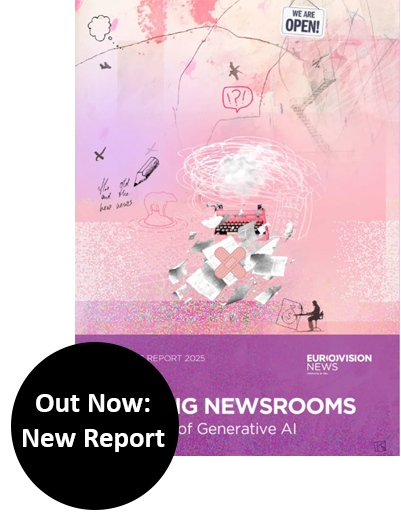Newsrooms can fight “fake news” by identifying it, warning about it and correcting it. But they can also fight it with so much trustworthy, factual and well researched journalism that it drowns out the lies. For most of them it’s not an either/or decision, of course; they try to do both. The European Broadcasting Union has recently unveiled a project that caters to the latter: It wants to deliver class en masse and will do so by scaling content across countries and languages using automated translation.
The project promises quite a bit: starting in July, ten public broadcasters from Europe will feed in particularly good pieces on globally important topics such as Covid-19, climate change and migration, which will then be translated by artificial intelligence and made available across Europe. In an eight-month pilot phase, 14 institutions had shared more than 120,000 articles this way. This worked so well that the EU is now helping with a grant. So in the future, citizens could benefit not only from more reliable information, but also from more diversity, if things go well.
In fact, automated translations could revolutionize journalism. If you haven’t struggled with texts translated by software into other languages for a while because you found the results rather unsatisfactory, you might want to try it again. Artificial intelligence, which works on the principle of deep learning, now translates texts like this one into English within seconds. With a little editing, they read – this needs to be said – much better than what one used to get back from translators who knew a foreign language but not necessarily the journalistic form. The AI products are, in the truest sense of the word, frighteningly good.
Admittedly, robots work reliably in a few languages only, but they are learning as we read. And the result will shape journalism – but in different directions. On the one hand, the tools open up new possibilities for publishers. Whereas until now only newsrooms from English-speaking countries were able to offer their journalism worldwide, in the future everyone will be able to do so for whom it makes sense commercially or qua mission. Not every media company will be able to turn itself into a New York Times or a Guardian, but the options for Europe-wide news portals are growing rapidly. At the start-up Forum.eu, for example, AI now handles 60 percent of the total translation work, according to co-founder Paul Ostwald’s estimate. The platfom makes quality journalism from different countries accessible all over Europe.
Editors could also reach people with other native languages more easily in their own countries via automated translation, for example hard to connect with migrant communities. And international research should become much easier if reporters have better access to original documents this way. The whole thing does not only work for written but also for spoken material (which stillmakes for funny subtitles on TV).
However, newsrooms have already realized that there is not only a huge potential for expansion, but also for savings. Reuters news agency has long been redeploying resources, for example from its German-language service to parts of the world where citizens are in greater need for journalistic scrutiny. And of course this makes sense: Instead of sending a German- and an English-speaking colleague to the same press conference in Berlin, an additional colleague in, for example, the Philippines can create real added value.
However, it is precisely at this point that things become critical. After all, language is only ever a packaging for content that arises in the context of a culture. The exact same fact can read completely differently depending on who is describing it. When, for example, star conductor Simon Rattle recently announced that he would be joining the Bavarian Radio Symphony Orchestra as chief conductor in 2023, German culture reporters were thrilled. Reading the British Guardian on the same day, one learned that Rattle had extended his contract with the London Symphony Orchestra until 2022, oh, and at some point he would go to Munich. One event, two reporters, two worlds, a translation would not have helped in this case.
A translation tool will not replace a foreign correspondent – but it will make his or her work easier. This is bad news for all those fixers and local journalists around the globe who make sure that journalists get the right information, contacts and access without which they would often be lost on foreign territory. If they are not needed as translators any longer, they might soon be out of their jobs. Already, only a few newsrooms can afford a network of reporters far from home. Easier access to all the world’s languages is likely to accelerate this development – but it has not caused it.
As with many things that new technology offers, there is one temptation, and it has to be resisted: That you have to do what you can do. Translating content via AI just because it works is not a strategy. What audience do you want to reach with what content, and what do you want it to achieve? Do you have a mission, a business model, or just fun with it? There they are again, these questions that no AI can answer. Meanwhile, beware: AI is increasingly used to translate “fake news” as well.
This column was published on 4th February 2021 with Hamburg Media School in German, then translated with www.DeepL.com/Translator (free version) and edited.



